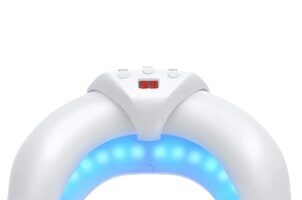Regenerative medicine, also known as stem cell therapy, is showing promise as a management option for stroke patients. A stroke can occur when the brain is deprived of oxygen related to the temporary interruption of blood flow.
When this happens, the direct result is the loss of brain cells. The results of a stroke depend on the severity and location of brain damage but can include long-term effects such as paralysis, loss of verbal skills, and memory loss.
In the US, 795,000 people are affected by strokes every year. In the past, treatments for stroke were limited and often ineffective unless they began within hours of the incident. Today, regenerative medicine is offering new hope to stroke survivors.
Types of Strokes
There are three different types of stroke: ischemic, hemorrhagic, and transient. Identifying the type of stroke a person has had helps health care providers decide which type of treatment provides the greatest potential for recovery.
Ischemic Stroke
Ischemic stroke is the most common and may occur when a blood vessel to the brain is damaged or obstructed. Blood clots or a buildup of cholesterol are typically the cause of this type of obstruction.
Hemorrhagic Stroke
A hemorrhagic stroke is less common. It can occur when a blood vessel is damaged, causing blood to seep into the brain.
Transient Stroke
Transient or TIA stroke lasts only a few moments and does not cause permanent damage. TIA strokes are sometimes called “ministrokes.” A TIA may be a warning sign of an ischemic stroke and should be treated seriously.
How Does Stem Cell Therapy Help Stroke Victims?
Stem cell therapy is a minimally-invasive, non-surgical treatment that boosts the body’s natural healing ability. Stem cell therapy works by introducing healthy new mesenchymal stem cells into the body. Mesenchymal cells are the building blocks for all tissues within the body.
Stem cells are naturally regenerative and have an anti-inflammatory effect. They seek out the injured or diseases areas. As they multiply, these new cells replace the injured and dying cells.
A trial conducted by the Stanford University School of Medicine included people who experienced a stroke between six months and three years before the study.
Donor stem cells were transplanted to the brain. Within months, every participant in the study showed signs of improvement in motor function. The university monitored participants for years after the study, and the improvements held throughout that time.
A newer study published by the University of California found that intravenous injection of mesenchymal cells was safe and effective in treating patients after a stroke. This study required that participants have no significant improvement for two months before enrolling.
The Potential of Regenerative Medicine
Regenerative medicine may be best known for treating auto-immune diseases like Lupus or helping with pain management. However, it is also a promising option for traumatic brain injury, stroke, and other neurodegenerative conditions.
Stem cell therapy is not a cure, and improvement cannot be guaranteed. However, several science-based studies support mesenchymal cells as a safe and effective treatment for patients to consider and explore their options.
This post was written by a medical professional at Stemedix Inc. At Stemedix we provide access to Regenerative Medicine, also known as Stem Cell Therapy in St Petersburg Florida. Regenerative medicine seeks to replace tissue or organs that have been damaged by disease, trauma, or congenital issues.





